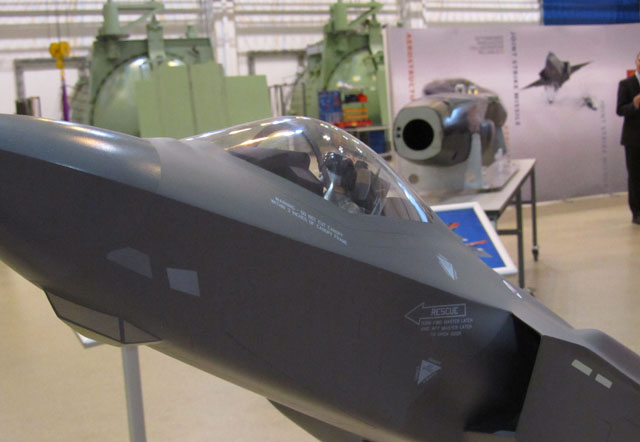Although they are far too polite to show it, a visitor can tell that officials from Norwegian defence and technology manufacturer Kongsberg are weary of comparisons with Saab, its Swedish neighbour. It is an easy link to make given their geographical proximity and broad business footprints, but there are a number of key differences.
In purely financial terms, Saab is the bigger of the two, with 2011 turnover at SKr23.4 billion ($3.55 billion), compared with Kongsberg's NKr15.1 billion ($2.69 billion). Finances highlight another key distinction. Almost $1 billion, or about 28% of total revenue, was generated by Saab's aeronautics division - principally sales of its Gripen fighter aircraft, but also unmanned air vehicles and a presence on Boeing's 787s programme. Kongsberg's aeronautics operation accounted for just $62 million, producing composite and machined metal components for NH Industries NH90 helicopters and the Lockheed Martin F-35, for example.
NICHE PLAYER
Where Kongsberg has made its name is in niche products. Through its close co-operation with Norway's armed forces it has developed systems suited for the country's harsh conditions "that have proven to be competitive internationally". It also claims to be Norway's biggest software house, producing command and control and surveillance programmes.
 |
|---|
Kongsberg |
For example, thanks to a 1997 contract win, it supplies the situation control software on NATO Boeing E-3 AWACS aircraft. It is the largest software programme in the company's history, it says.
Similarly, Kongsberg has since won another NATO contract, this time to develop a piece of software called the System Master Archival Retrieval Facility - essentially a hugely sophisticated search engine - for the Northrop Grumman Global Hawk Block 40-based Alliance Ground Surveillance system. It will enable the user to interrogate the enormous amount of data input into the database - be it video, still images or written reports - for a given location during a certain period.
LEAD ROLE
A key part of Kongsberg's strategy has been to position itself as the lead company for Norway's defence industry. Thus, when the Oslo government embarks on procurement projects, Kongsberg gains a chunk of industrial participation in the relevant programme. Take the F-35, for example. Norway indicated its intention to order the Joint Strike Fighter in the late 2000s and, as a result, Kongsberg has won several contracts for the programme, producing composite panels for the centre fuselage, rudders and leading edges on the canted tails and pylons for air-to-air missiles.
To support this influx of work, it has invested NKr1 billion to develop a new 30,000m² (323,000ft²) production facility on a former army barracks five minutes outside the small town from which the company takes its name. The factory is also being used to produce the composite fuselage of the Joint Strike Missile for the F-35, a Kongsberg-developed stealthy munition.
Speaking at a ceremony to mark the unveiling of the first JSM fuselage on 29 November, Norway's deputy defence minister Eirik Øwre Thorshaug said the Oslo government is focused on maximising the country's industrial participation in the Joint Strike Fighter. Kongsberg, which is majority owned by the Oslo administration, is the key to that involvement, he says. "It is a company with a 200-year history which is now at the cutting edge of industrial defence capability development. The JSM forms part of that effort and Kongsberg is actively offering it to other partner nations as it eyes a market worth an estimated NKr25 billion.
"With the development of this fifth-generation missile," he says, somewhat proudly, "we are bringing something special to the other partner countries."
The target, says Thorshaug, is for Norway to win about NKr36 billion worth of work on the JSF. "We are interested in the returns. We aim to have as much in industrial contracts as we spend in acquisition costs on the plane itself. That's what we have told the Norwegian parliament and they are very eager to know the industrial opportunities for Norway's industry."
And, as Kongsberg's annual report adds, it is not only the company which benefits from such openings. "Such participation for Kongsberg also means increased activities in many of the 1,500 Norwegian subcontractors in the business area," it states.
Source: Flight International























